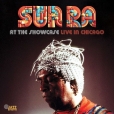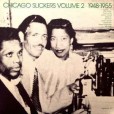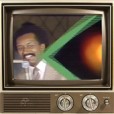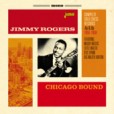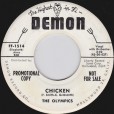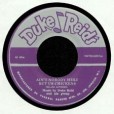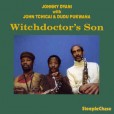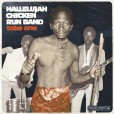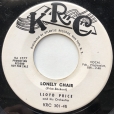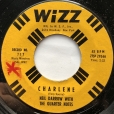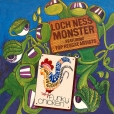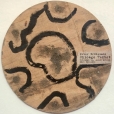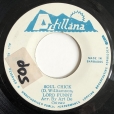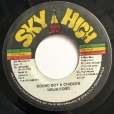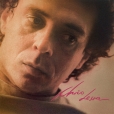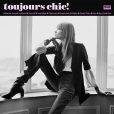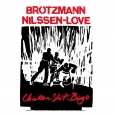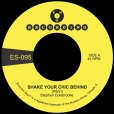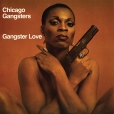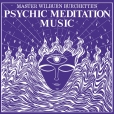Your basket is empty

A second volume of ‘the best and rarest Chicago blues of the early postwar era.’ Little Walter, Muddy Waters, Sunnyland Slim, Floyd Jones, Snoooky Pryor, Roosevelt Sykes… all present and correct.
You need it for Johnny Shines’ Living In The White House, about setting society to rights, over the rocking saxophone of J.T. Brown. ‘I want to live in paradise, make servants out of kings and queens / Now don’t shake me please darlin / This is one time I want to finish my dream.’
Guaranteed to put a beam on your bean and a glide in your stride, the DVD here compiles moments from a local 1982 TV show, broadcast live from a club called The CopHerBox. It’s pleasurable enough just watching people get down so naturally, in a real-life club… but you also get ventriloquists, contortionists, body-builders, impersonators, ‘the full-figured ladies fashion show’, comedy sketches, android group-dancing to techno, rubber chickens… and bands like Universal Togetherness miming to their latest records. There’s also a mini-documentary, complete with Phil Cohran section; and twenty-three full musical performances. (Finally the Dingwalls posse gets a glimpse of Luba Raushiek in action.)
The CD and vinyls are culled from a trove of self-released 45s and small-time twelves; a die-cut cathode-ray jacket and six in-package stills are your tickets and souvenirs.
Great fun.
Roland Al tearing up Louis Jordan in 1962; plus a tasty, doowop-derived ska shuffle.
Both sides previously unreleased.
A stunning complement to Theme De Yoyo!
Panou was an activist and actor, in Paris from Benin; he plays a refuse collector in Jean-Luc Godard’s Weekend. His texts here cross existentialism and Black Power like a knockabout Richard Wright, with an extra shot of anti-colonialism. Recorded by Pierre Barouh for Saravah, in the same months as its classic Comme A La Radio LP with Brigitte Fontaine, furthering the AEC’s rowdily brilliant elaborations of Leroy Jones’ Black Dada Nihilismus.
It’s a scorcher; hotly recommended.
‘In 1972, the country of Rhodesia — as Zimbabwe was then known — was in the middle of a long-simmering struggle for independence from British colonial rule. In the hotels and nightclubs of the capital, bands could make a living playing a mix of Afro-Rock, Cha-Cha-Cha and Congolese Rumba. But as the desire for independence grew stronger, a number of Zimbabwean musicians began to look to their own culture for inspiration. They began to emulate the staccato sound and looping melodies of the mbira (thumb piano) on their electric guitars, and to replicate the insistent shaker rhythms on the hi-hat; they also started to sing in the Shona language and to add overtly political messages to their lyrics (safe in the knowledge that the predominantly white minority government wouldn’t understand them). From this collision of electric instruments and indigenous traditions, a new style of Zimbabwean popular music — later known as Chimurenga, from the Shona word for ‘struggle’ — was born. And there were few bands more essential to the development of this music than the Hallelujah Chicken Run Band…’
Their biggest hits — along with several rare tracks — recorded between 1974 and 1979.
‘Brotzmann barely plays saxophone at all, sticking mostly to tarogato and a host of clarinets; Nilssen-Love mostly plays gongs, bells and other metal percussion. With the changes in tools comes a change in approach. Nilssen-Love is sparer and more decorative, providing accentuating commentary that highlights the more solemn and yearning aspects of his partner’s playing, and Brotzmann explores melancholy to devastating effect. This is a career peak for the recently departed reedist’ (Bill Meyer, The Wire).
The Barca-born pianist back to wow us again on piano, Fender Rhodes, Chinese gongs, and a little whistling; with longtime collaborator Masa Kamaguchi, and Detroit drum wizard Gerald Cleaver. ‘Where melodic density meets contrapuntal dialogue, a free interplay of rich textures and riveting, masterly improvisation. This smooth complexity is what gives rise to the group’s uniqueness.’
The Wire magazine hailed the first volume: ‘deep and thoughtful’.
